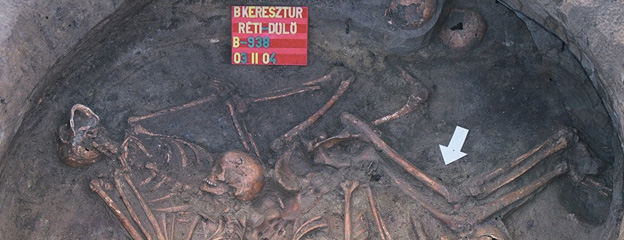‘South Wind’ – conference in Vienna
An international workshop was held at the Institute for Oriental and European Archeology (OREA) at the Austrian Academy in early April that examined the archaeological evidences of Central European, Balkanian or Northern Italian relations of the Adriatic Sea region 3400 and 3000 years ago, during the Late Bronze Age. Connections with these regions and the distant influences of communities living in the Alps and Carpathians have played a decisive role in this era, even beyond the extensive cultural network of the Mediterranean.
Though the lectures mainly analyzed the relationship of the Late Bronze Age material culture, thus covering a somewhat later period than the focus of our research, their methods of investigation and some of the results may also be useful for evaluating Early and Middle Bronze Age finds. The opening talk that took place in the evening of April 5, was held by Elisabeth Borgna, an Italian research fellow (Udine) about the results concerning the 14-11th centuries BC of the ongoing excavations at Aquileia, at the junction of the Adriatic and Alpine mountain regions. Among others, Reinhard Jung and Mathias Mehofer, Austrian researchers, investigated the lead-izotope and trace element composition of Late Bronze Age metal objects of the Adriatic region, and concluded that copper from the vicinity of Trento, Northern Italy was widely used during the period considered, which is particularly interesting for the Mycenaean-type objects. Using a bioarchaeological approach in his lecture, Claudio Cavazzuti compared the large cremation cemeteries of the Terramare culture of Northern Italy to the cemeteries of the Middle Bronze Age Vatya culture of the Carpathian Basin with a special regard to their structure and to some elements of the mortuary ritual. (Due to his Marie Sklodowska Curie, the young Italian colleague is a collaborative partner of the Momentum Mobility Research Group of RCH HAS is a collaborative partner of the Marie Skłodowska Curie-funded research topic of the young Italian colleague. In last October, we presented a joint lecture on the questions of the shift from inhumation to cremation in the Bronze Age at the UISPP Conference in Forlí.)
The Viennese conference was attended by Slovenian, Italian and Austrian colleagues. The organizers (Michaela Lochner, Mario Gavranović, Katharina Rebay-Salisbury and Stefanos Gimatzidis) took care of both scientific quality and family atmosphere. From our research group, Eszter Melis – who is currently staying in Vienna with a research grant – participated at the event.
See more at http://www.orea.oeaw.ac.at/veranstaltungen/event-detail/article/south-wind/








